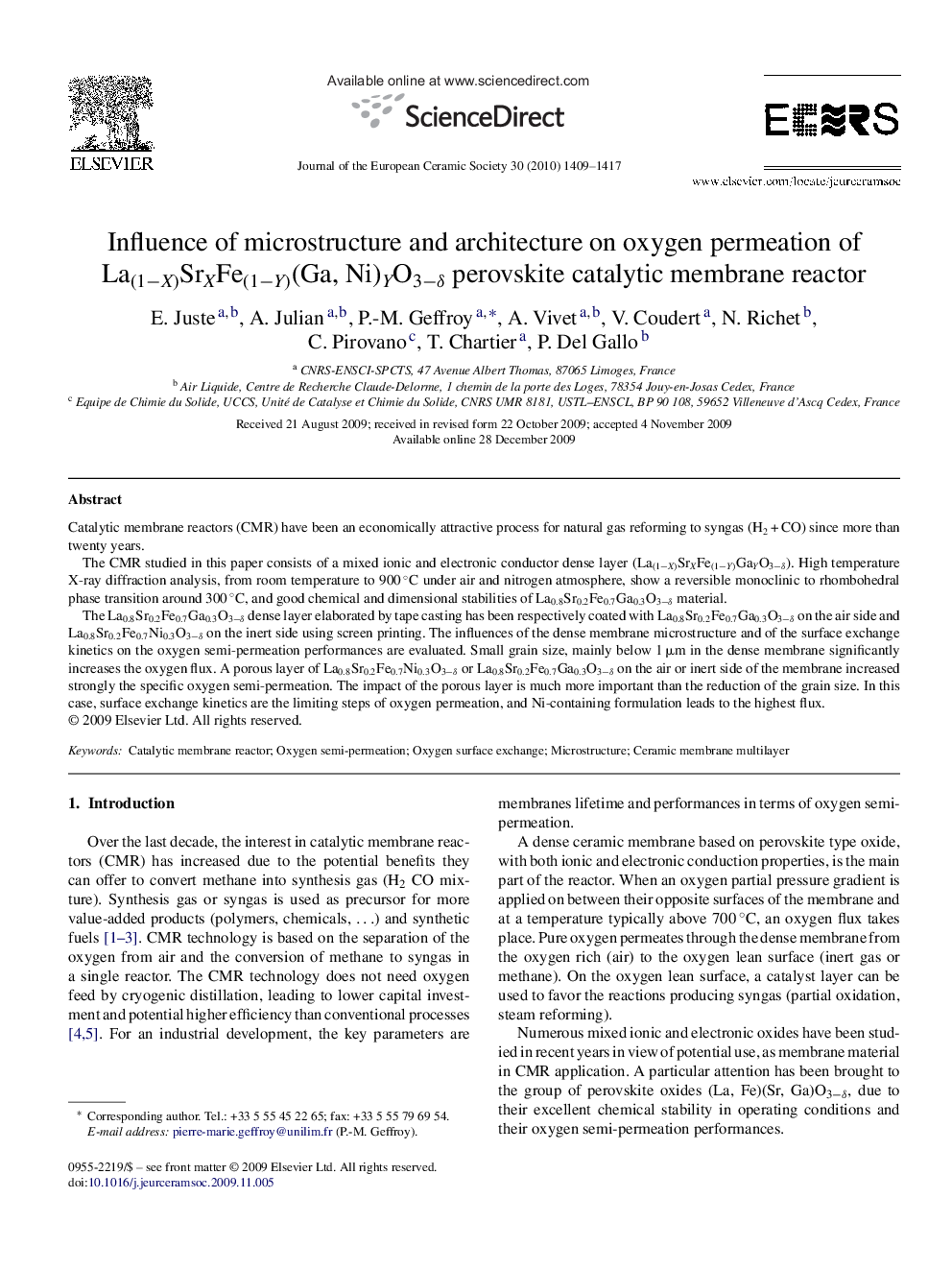| Article ID | Journal | Published Year | Pages | File Type |
|---|---|---|---|---|
| 1474786 | Journal of the European Ceramic Society | 2010 | 9 Pages |
Catalytic membrane reactors (CMR) have been an economically attractive process for natural gas reforming to syngas (H2 + CO) since more than twenty years.The CMR studied in this paper consists of a mixed ionic and electronic conductor dense layer (La(1−X)SrXFe(1−Y)GaYO3−δ). High temperature X-ray diffraction analysis, from room temperature to 900 °C under air and nitrogen atmosphere, show a reversible monoclinic to rhombohedral phase transition around 300 °C, and good chemical and dimensional stabilities of La0.8Sr0.2Fe0.7Ga0.3O3−δ material.The La0.8Sr0.2Fe0.7Ga0.3O3−δ dense layer elaborated by tape casting has been respectively coated with La0.8Sr0.2Fe0.7Ga0.3O3−δ on the air side and La0.8Sr0.2Fe0.7Ni0.3O3−δ on the inert side using screen printing. The influences of the dense membrane microstructure and of the surface exchange kinetics on the oxygen semi-permeation performances are evaluated. Small grain size, mainly below 1 μm in the dense membrane significantly increases the oxygen flux. A porous layer of La0.8Sr0.2Fe0.7Ni0.3O3−δ or La0.8Sr0.2Fe0.7Ga0.3O3−δ on the air or inert side of the membrane increased strongly the specific oxygen semi-permeation. The impact of the porous layer is much more important than the reduction of the grain size. In this case, surface exchange kinetics are the limiting steps of oxygen permeation, and Ni-containing formulation leads to the highest flux.
